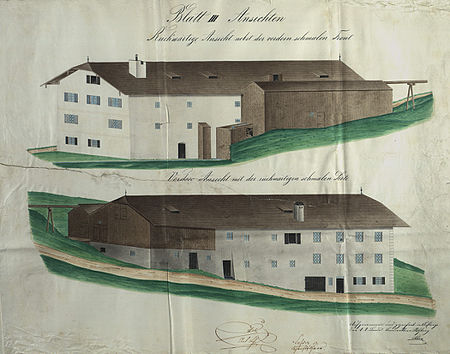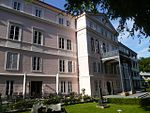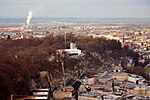Haslachmuhle
Buildings and structures in SalzburgEconomy of Salzburg (state)Watermills in Austria

The Haslachmühle is a landmarked historic flour mill in Salzburgs urban district and former mill village Gnigl. The building was first documented in 1577 as "kleine Müllel im Haslach". Today's building was constructed in 1688 und was expanded during the last centuries. The mill is also known as Flocknermuhle (Flöcknermühle) and is private property of the family with the same name since the mid of the 19th century. It was powered by an overshot water wheel. In 2014 a bed and breakfast was opened in the main building named "Romantic Pension Haslachmuhle".
Excerpt from the Wikipedia article Haslachmuhle (License: CC BY-SA 3.0, Authors, Images).Haslachmuhle
Mühlstraße, Salzburg Gnigl
Geographical coordinates (GPS) Address Nearby Places Show on map
Geographical coordinates (GPS)
| Latitude | Longitude |
|---|---|
| N 47.8133 ° | E 13.0822 ° |
Address
Mühlstraße 18
5023 Salzburg, Gnigl
Salzburg, Austria
Open on Google Maps








